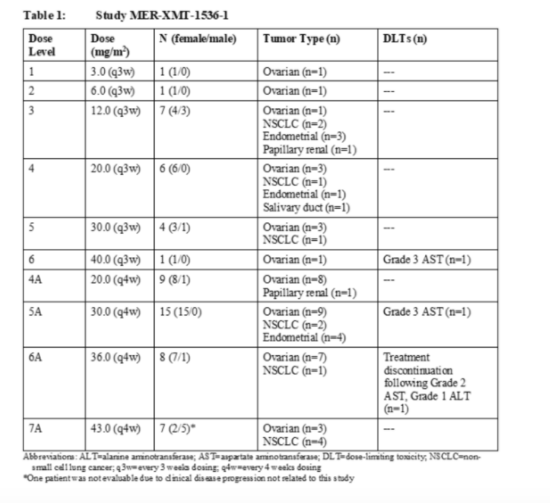Article
Novel Drug Well Tolerated in Patients With Ovarian Carcinoma, Non-Small Cell Lung Cancer
Author(s):
XMT-1536, a first-in-class antibody-drug conjugate NaPi2B was well tolerated with no dose-limiting toxicities in patients with ovarian cancer and non-small cell lung cancer (NSCLC).
XMT-1536, a first-in-class antibody-drug conjugate NaPi2B was found to be well tolerated with no dose-limiting toxicities (DLT), according to research presented that the Society for Gynecological Oncology 2020 Annual Meeting on Women’s Cancer.
XMT-1536 is a transmembrane sodium-phosphate transporter that is expressed in ovarian carcinoma and NSCLC, as well as other tumors. Through this study, researchers wanted to determine the maximum tolerated dose (MTD) and/or the RP2D dose, and to evaluate the safety, tolerability, and preliminary efficacy of XMT-1536.
In this phase 1 study, 59 patients were enrolled in escalating dose cohorts 3 mg/m2 to 43 mg/m2 and were assessed for safety, pharmacokinetics, and response to therapy. A safety review committee reviewed each cohort prior to escalation to the next higher dose level.
Of the 59 patients who were enrolled, 37 patients had ovarian cancer and 11 patients had NSCLC. The most common treatment-related adverse events (AEs) were grades 1 and 2 transient aspartate transaminase (AST) elevations and fatigue. Three patients have experienced dose-limiting toxicity: grade 3 AST increased at dose level 6 and (40 mg/m2 q3w) and dose level 5A (30 mg/m2 q4w) and treatment discontinuation following grade 2 AST increased and grade 1 ALT increased at dose level 6A (36 mg/m2 q4w).
There were no DLTs reported in the highest cohort completed (dose level 7A, 43 mg/m2 q4w, n = 7). There were 32 AEs have been reported, of which 4 were determined to be possibly or probably related to XMT-1536 (congestive cardiac failure, 2 pyrexia, and vomiting).
XMT-1536 was well tolerated with no reported DLTs in the highest dose level completed (dose level, 43 mg/m2 q4w). Researchers reported confirmed responses and prolonged stable disease.
The study is currently enrolling for dose expansion in patients with high-grade serous ovarian carcinoma and NSCLC, adenocarcinoma subtype. In addition, the safety review committee has recommended escalating to dose level 8A (52 mg/m2 q4w), and enrollment in this cohort has been initiated.
The complete safety data can be found below.

- A phase 1 study of XMT-1536 in patients with solid tumors likely to express NaPi2b: A summary of dose escalation [news release]. SGO website. Published March 30, 2020. https://sgo.confex.com/sgo/2020/meetingapp.cgi/Paper/17238. Accessed April 3, 2020.





